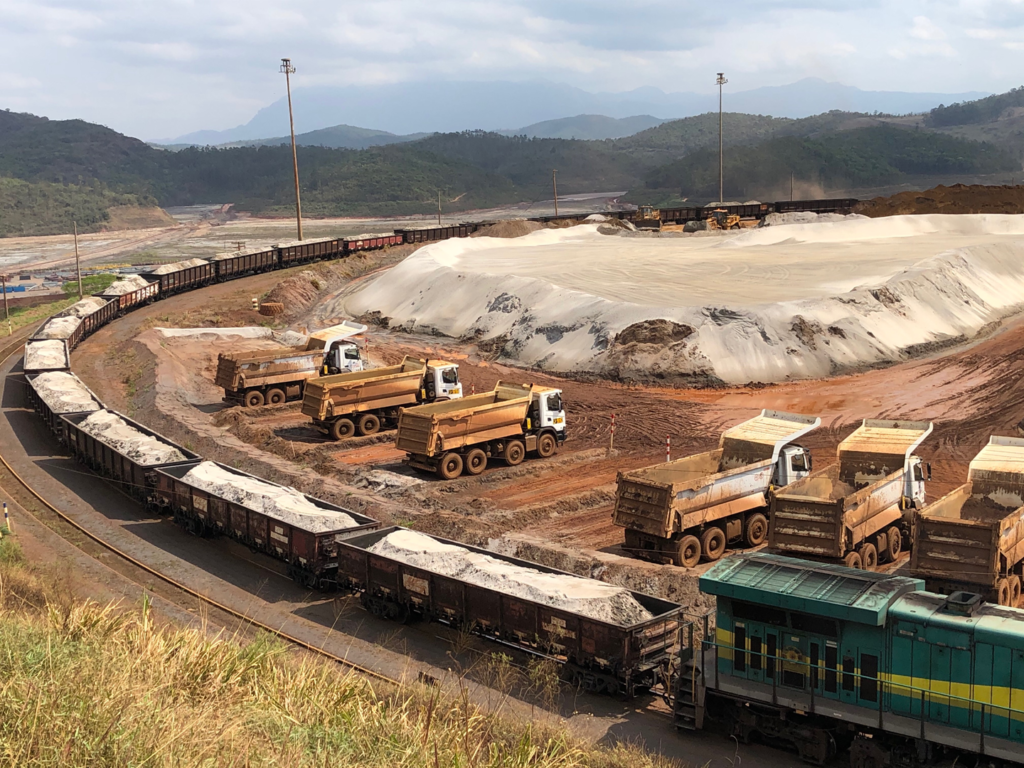One of the big contributors to this report was Vale, which, itself, has developed Sustainable Sand, a co-product of iron ore processing that, instead of being disposed in piles and dams, is now being processed and transformed into a product, following the same quality controls as in its iron ore production.
This year, Vale will allocate around 1 Mt of sand between sales and donations for use in civil construction and tests in pavement, among other uses. Much of this is set to come from its Brucutu mine in Minas Gerais.
IM put some questions to Bruno Batista, Engineer at Brucutu mine, and Fabiano Carvalho Filho, Executive Manager for Ferrous Business Development, to find out more about the company’s plans for Sustainable Sand.
IM: How has Vale changed its operational practices at mine sites to make the most of the Sustainable Sand process? For instance, have mine plans or layouts been adapted to ensure it is easier to obtain and process this material?
BB: First of all, Vale has done deep research about the technical potential for iron ore tailings and the mineral processing to obtain sand from them. Despite sand generation sharing existing assets deployed for the exploration of iron ore, it is important to highlight that Vale had to obtain the mineral and environmental licence to produce, sell and donate sand. The use of new technologies for greater recovery of iron ore have been installed in our operations and, as a result, we will have better quality sandy tailings. In some cases, it was necessary to implement new stages of concentration, classification and filtration so that it was possible to produce quality sand that met market requirements. We did change the quality control, treating sand as a product, with specification, daily analysis and process adjustment in order to meet it.
IM: I think it was 250,000 t of sand set aside for sale or donation to be used in concrete, mortar, cement and road pavement last year, another 1 Mt/y this year and 2 Mt/y in 2023. What are the longer-term goals for Sustainable Sand and – at the same time – how is this impacting your tailings handling plans?
BB: Vale’s objective is to enable more sustainable mining. The figures you mention are correct. Our pace of production in the long term will depend upon several factors, such as logistics capacity and market availability. Sustainable Sand is one of the initiatives to reduce the generation of tailings. Other initiatives are being developed as such as dry concentration and tailings filtering.
IM: Is there a balance to be had here with using sand for dry-stacked tailings purposes – increasing the stability of your tailings infrastructure – and donating/selling it for other uses? Is this what could potentially put a ‘cap’ on your Sustainable Sand production for sale/donation?
BB: Coarse tailings are destined for sand production and also for dry stacking. To increase more significantly sand production there are some challenges, such as logistics capacity and market availability. Vale is advancing and we should forecast a production of 2 Mt in 2023. We are also studying applications for the ultrafine material, so we would need less coarse tailings for dry stacking.
IM: Aside from the 425-m-long road at the Cauê mine, in Itabira, and the Pico Block Factory, what other applications will the sand have?
FCF: At the moment, the focus is on the construction market, mainly concrete, mortar and cement, as it has the largest production scale and is already being sold to by Vale, and road pavement, in which we are advancing our research. Vale has a portfolio of more than 20 initiatives for the use of tailings from mining. These initiatives are the result of partnerships with universities, research centres and other companies. These are initiatives that encompass several industries, focused on civil construction, chemical industry and automotive, among others. The initiatives are at different stages of maturity and the future of the projects still depends on progress in the research being carried out.
IM: Sand is the planet’s most mined material, so what does Vale plan to do with this Sustainable Sand process to reduce the environmental impact of the wider mining industry?
FCF: Vale’s objective is to enable more sustainable mining. The UNEP report (2022), in which the Vale Sand Case has been studied, shows that substituting naturally-sourced sand with ore sand (sand from iron ore tailings) could potentially lead to net reductions in carbon emissions generated during sand production. The substitution of marine or riverine sand for ore sand could also lead to a reduction in ecosystem damage. Besides that, Vale Sand is a certified product, which can contribute to this particular industry.
IM: Is there potential for other iron ore mining companies using this process to reduce their own tailings generation? the process been patented?
FCF: Iron ore tailings beneficiation demands investments and technology; there are patents involved in the development of other products derived from the sand.











